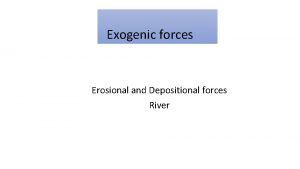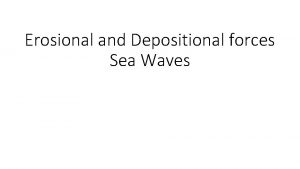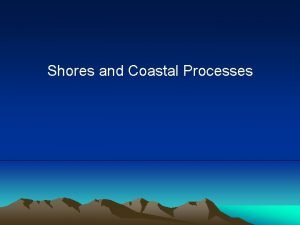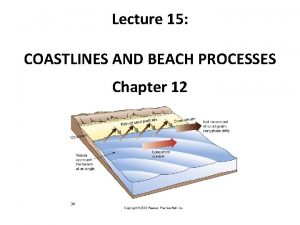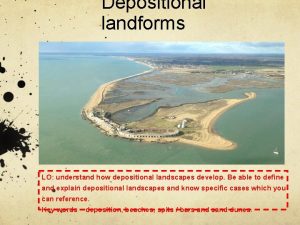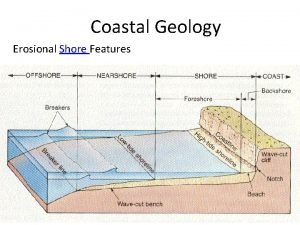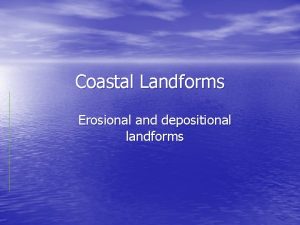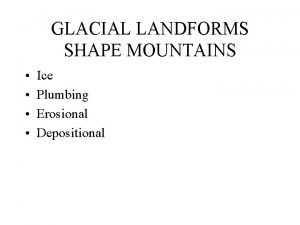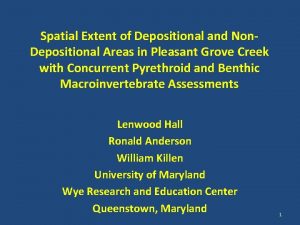Exogenic forces Erosional and Depositional forces River Work







- Slides: 7

Exogenic forces Erosional and Depositional forces River

Work of a River • Running water is the most effective agent of erosion. • Rivers are eroding, transporting and depositing constantly. • The river can be divided into 3 sections: 1. Upper Course at the Source, 2. Middle Course in the plains 3. Lower Course at the Mouth of the river. • The river displays different characteristics at each section.

Waterfalls often form in the upper stages of a river where it flows over different bands of rock. It erodes soft rock more quickly than hard rock and this may lead to the creation of a waterfall. Formation of a waterfall: • The soft rock erodes more quickly, undercutting the hard rock. • The hard rock is left overhanging and because it isn’t supported, it eventually collapses. • The fallen rocks crash into the plunge pool. They swirl around, causing more erosion. • Over time, this process is repeated and the waterfall moves upstream. • A steep-sided gorge is formed as the waterfall retreats. Waterfall formation

FORMATION OF MEANDERS AND OXBOW LAKES • Meanders usually occur in the middle or lower course of the river. • As the river enters the plain it twists and turns forming large bends known as meanders. • Due to continuous erosion and deposition along the sides of the meander, the ends of the meander loop come closer and closer. • In due course of time the meander loop cuts off from the river and forms a cut-off lake, also called an ox -bow lake.

FLOODPLAIN • A floodplain is a primarily flat area of land bordering a river that floods when the river is unusually high. • A floodplain is formed by the action of water that redistributes sediment evenly during repeated flooding. Famous Floodplains • Amazon River floodplain, Brazil • Ganges River and Brahmaputra River floodplain, Bangladesh and India

DELTA • As the river approaches the sea, the speed of the flowing water decreases, and the river begins to break up into several streams called distributaries. • The river becomes so slow that it begins to deposit its load. • Each distributary forms its own mouth. • The collection of sediments from all the mouths forms a delta.



